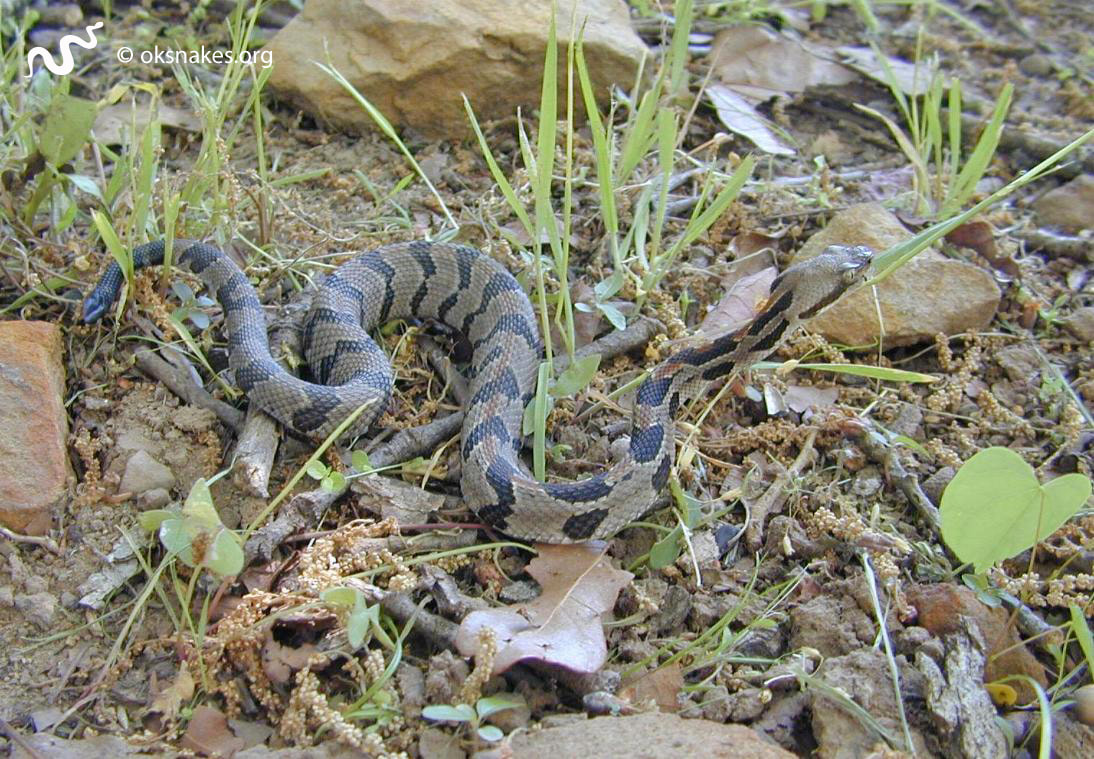Timber rattlesnake
Crotalus horridus
Crotalus horridus
VENOMOUS
Description:
This rattlesnake has a golden brown body with dark crossbands. Most southern forms have a reddish-orange stripe that runs down the back. This snake has keeled scales, a vertical pupil (not round *), and an obvious heat-sensing pit between the eye and nostril.
* Note: Pit viper pupils can often appear round in certain lighting, such as in photos utilizing a flash. Do NOT use pupil shape as a sole means to identify any snake in Oklahoma.
Size:
Adults 35 - 54 inches (89 - 137 cm)
Prey:
Rodents
Reproduction:
Mates in fall or spring and gives birth to live young in late summer to early fall. Typically has 5 - 15 babies that are 10 - 15 inches (25 - 38 cm) long.
Habitat:
Wooded areas, rocky outcrops, and swampy marshlands.
Other Information:
Commonly known as a "velvet tail" because of the black coloration of the tail, which has a soft, velvety appearance.
Why doesn't the range map show this species in my county?
Description:
This rattlesnake has a golden brown body with dark crossbands. Most southern forms have a reddish-orange stripe that runs down the back. This snake has keeled scales, a vertical pupil (not round *), and an obvious heat-sensing pit between the eye and nostril.
* Note: Pit viper pupils can often appear round in certain lighting, such as in photos utilizing a flash. Do NOT use pupil shape as a sole means to identify any snake in Oklahoma.
Size:
Adults 35 - 54 inches (89 - 137 cm)
Prey:
Rodents
Reproduction:
Mates in fall or spring and gives birth to live young in late summer to early fall. Typically has 5 - 15 babies that are 10 - 15 inches (25 - 38 cm) long.
Habitat:
Wooded areas, rocky outcrops, and swampy marshlands.
Other Information:
Commonly known as a "velvet tail" because of the black coloration of the tail, which has a soft, velvety appearance.
Why doesn't the range map show this species in my county?




